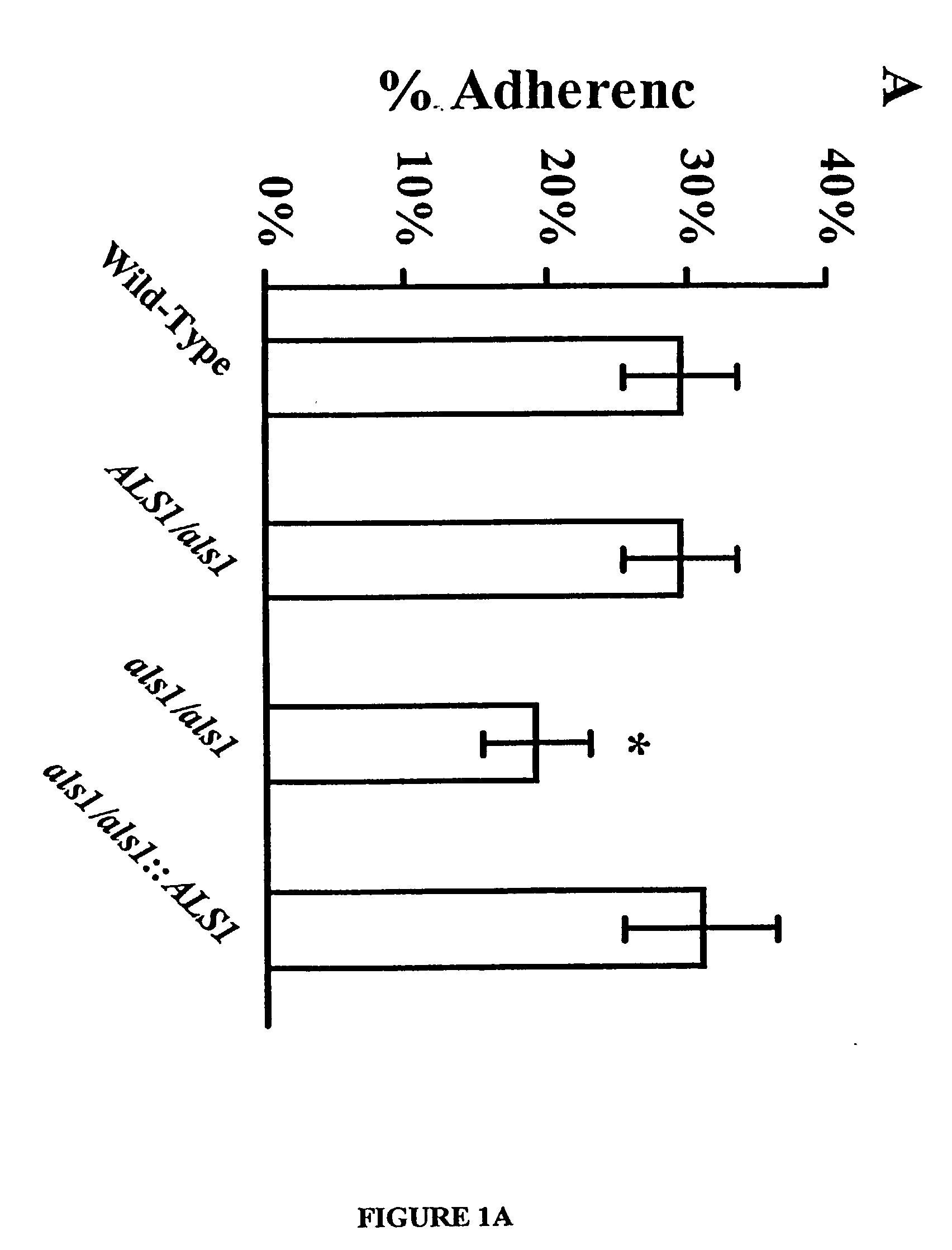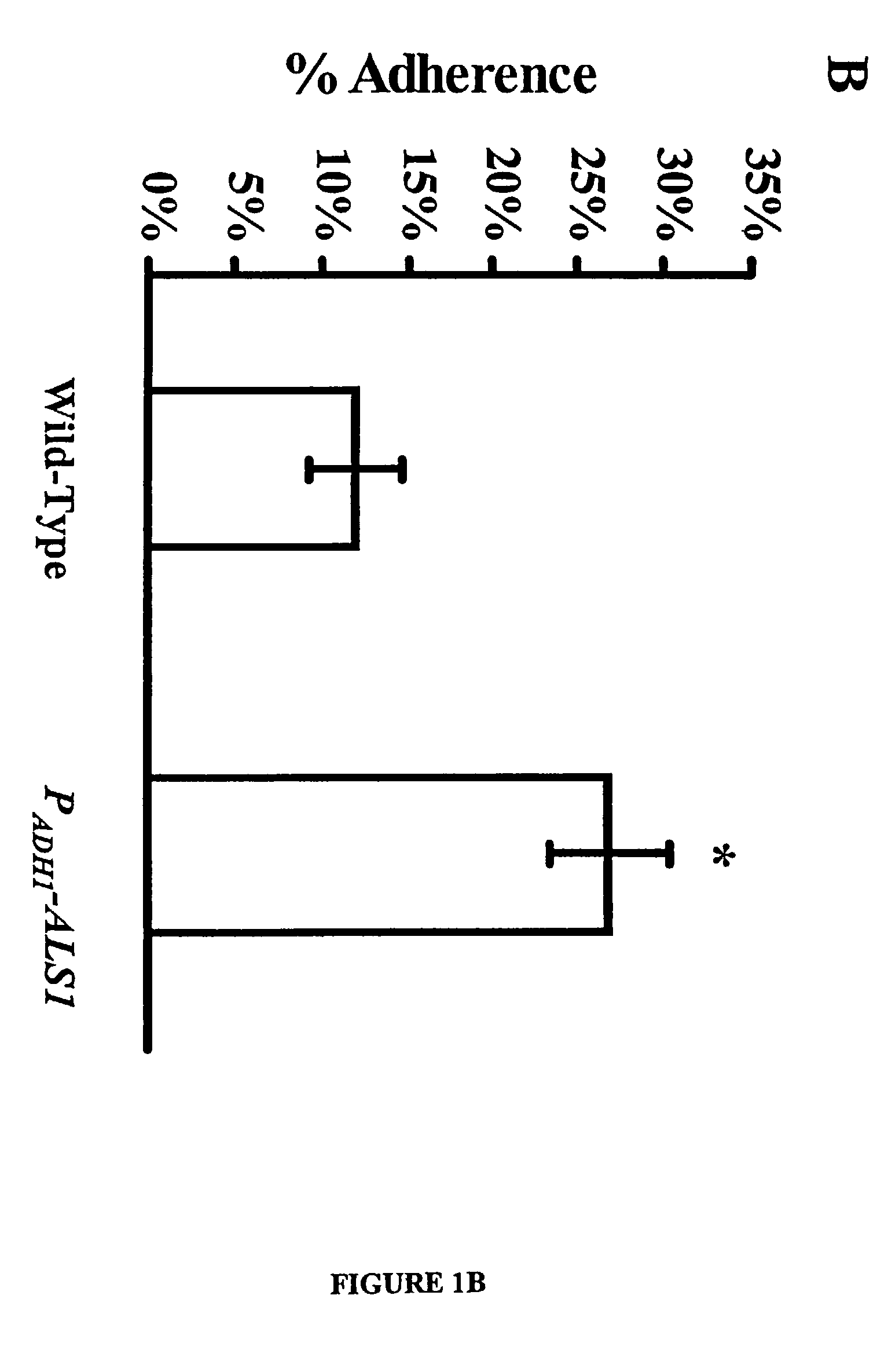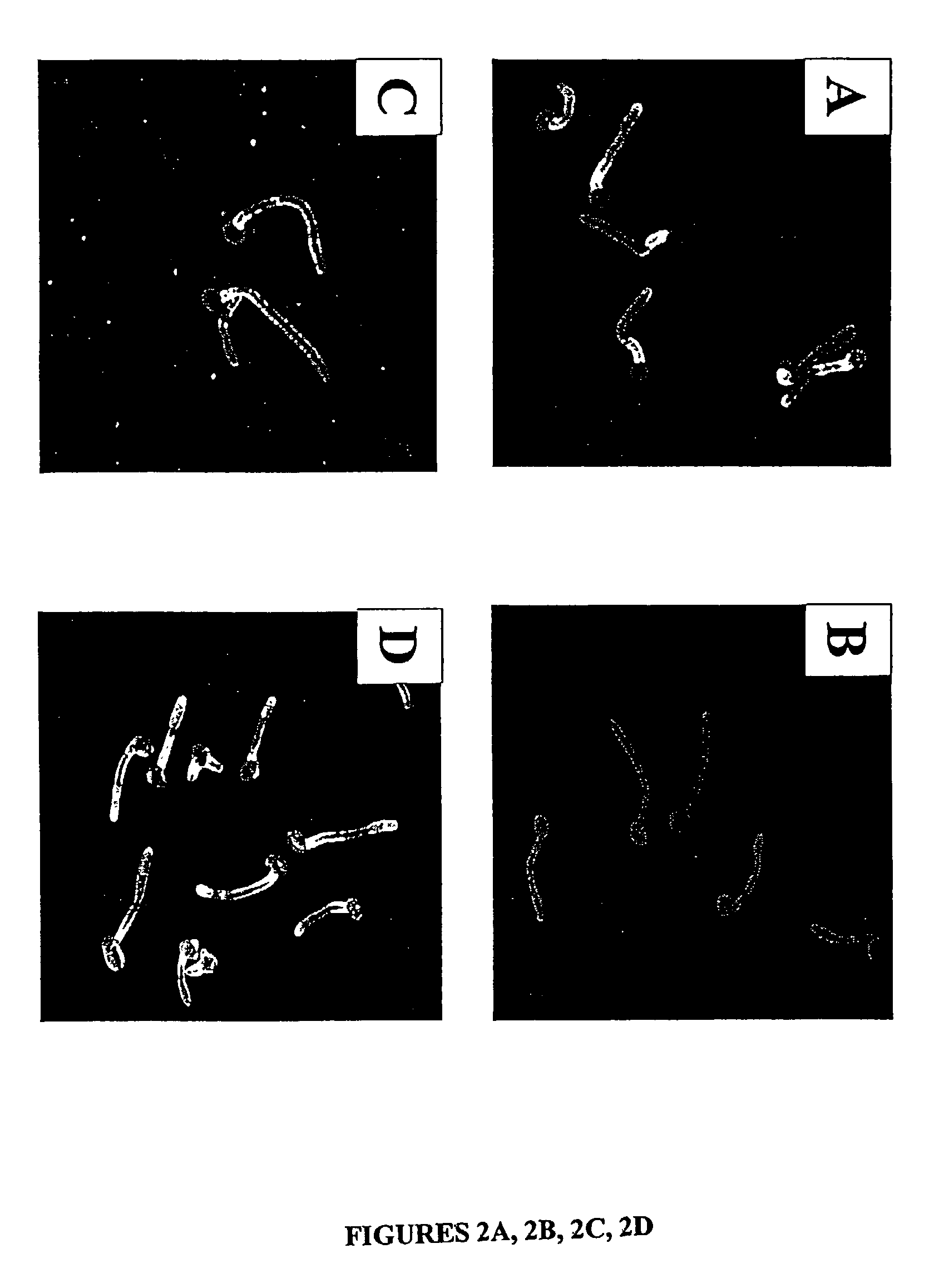Pharmaceutical compositions and methods to vaccinate against candidiasis
a technology of compositions and pharmaceutical compositions, applied in the field of pharmaceutical compositions and methods to vaccinate against candidiasis, can solve the problems of unfavorable toxicity of existing agents such as amphotericin b, unfavorable treatment of candidiasis, and varying site and severity of overt disease symptoms, so as to prevent, treat, or alleviate the effect of disseminated candidiasis
- Summary
- Abstract
- Description
- Claims
- Application Information
AI Technical Summary
Benefits of technology
Problems solved by technology
Method used
Image
Examples
example 1
Als1 Mediates Adherence of C. albicans to Endothelial Cells
[0048] The URA blaster technique was used to construct a null mutant of C albicans that lacks expression of the Als1p. The als1 / als1 mutant was constructed in C. albicans strain CAI4 using a modification of the Ura-blaster methodology [W. A. Fonzi and M. Y. Irwin, Genetics 134, 717 (1993)] as follows: Two separate als1-hisG-IRA3-hisG-als1 constructs were utilized to disrupt the two different alleles of the gene. A 4.9 kb ALS1 coding sequence was generated with high fidelity PCR (Boehringer Mannheim, Indianapolis, Ind.) using the primers: 5'-CCGCTCGAGATGCTTCAACAA-TTTACATTGTTA-3' (SEQ ID NO.1) and 5'-CCGCTCGAGTCACTAAATGAACAAGGACAATA3' (SEQ ID NO. 2). Next, the PCR fragment was cloned into pGEM-T vector (Promega, Madison, Wis.), thus obtaining pGEM-T-ALS1. The hisG-URA3-hisG construct was released from pMG-7 by digestion with KpnI and Hind3 and used to replace the portion of ALS1 released by Kpn1 and Hind3 digestion of pGEM-T-A...
example 2
Localization of Als1p
[0054] For a number of the ALS family to function as an adhesin protein, it must be located on the cell surface. The cell surface localization of Als1p, for example, was verified using indirect immunofluorescence with the anti-Als1p monoclonal antibody. Diffuse staining was detected on the surface of blastospores during exponential growth. This staining was undetectable on blastospores in the stationary phase. Referring to FIG. 2A, when blastospores were induced to produce filaments, intense staining was observed that localized exclusively to the base of the emerging filament. No immunofluorescence was observed with the als1 / als1 mutant, confirming the specificity of this antibody for Als1p. See FIG. 2B. These results establish that Als1p is a cell surface protein.
[0055] The specific localization of Als1p to the blastospore-filament junction implicates Als1p in the filamentation process. To determine the mechanism, the filamentation phenotype of the C. albicans ...
example 3
Purification of ALS1 Adhesin Protein, Truncated N-Terminal Protein
[0061] For use as an immunogen, an ALS protein synthesized by E. coli is adequate when vaccination with a traditional protocol yield an immune response generating B cells expressing measurable anti-ALS anti-sera or levels of serum Ig from which polyclonals may be obtained. However, eukaryotic proteins synthesized by E. coli may not be functional due to improper folding or lack of glycosylation. Therefore, to determine if the ALS1 protein can block the adherence of C. albicans to endothelial cells, the protein is, preferably, purified from genetically engineered C. albicans, and formulated into a substantially pure pharmaceutical composition that is pharmacologically effective for prophylactic or therapeutic treatment of disseminated candidiasis.
[0062] PCR was used to amplify a fragment of ALS1, from nucleotides 52 to 1296. This 1246 bp fragment encompassed the N-terminus of the predicted ALS1 protein from the end of t...
PUM
| Property | Measurement | Unit |
|---|---|---|
| Composition | aaaaa | aaaaa |
| Immunostimulation | aaaaa | aaaaa |
| Adhesion strength | aaaaa | aaaaa |
Abstract
Description
Claims
Application Information
 Login to View More
Login to View More - R&D
- Intellectual Property
- Life Sciences
- Materials
- Tech Scout
- Unparalleled Data Quality
- Higher Quality Content
- 60% Fewer Hallucinations
Browse by: Latest US Patents, China's latest patents, Technical Efficacy Thesaurus, Application Domain, Technology Topic, Popular Technical Reports.
© 2025 PatSnap. All rights reserved.Legal|Privacy policy|Modern Slavery Act Transparency Statement|Sitemap|About US| Contact US: help@patsnap.com



